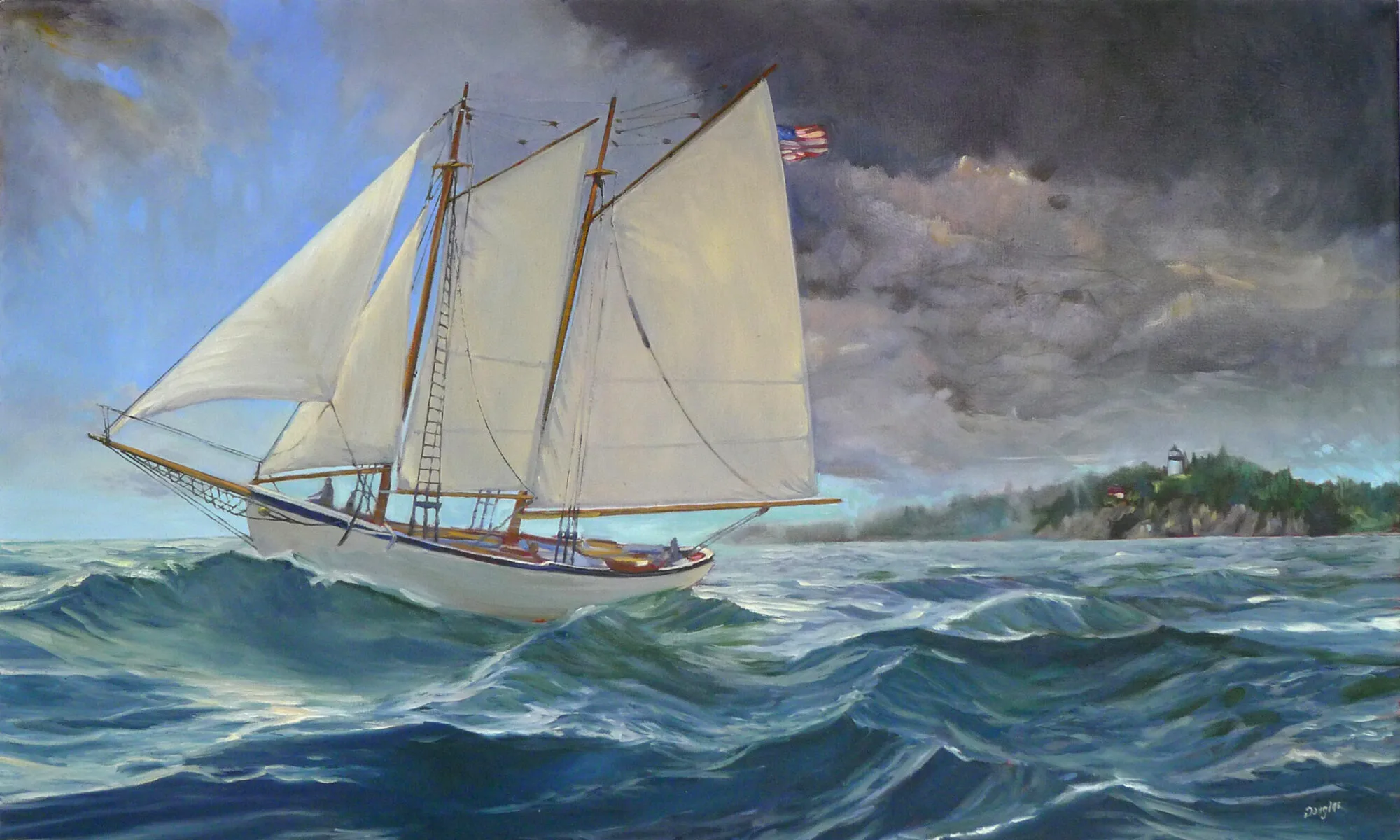Looking is at the heart of painting, and you can only trim that back so much.
 |
| Spring along the Sheepscot River, Carol L. Douglas |
Every painter has been asked “how long did that take you?” There are many witty responses to the effect of “three hours and thirty years.” The heavy lifting for this particular work may have been done in the weeks, months or years before you ever lifted a brush on this project. But this is not unique; it is true as well for the machinist, doctor, and other trained professionals who charge by billable hours.
What is immediate and also uncounted is driving-around time. This is a very big part of our preparation.
Yesterday I met Bobbi Heath at Round Pound. This harbor is about 45 minutes south of me and one of my favorites. It’s a tight, small space, with several working docks, rocks and spruces and a nearby general store for lunch. But what it lacked yesterday were lobster boats. The fleet was out.
 |
| Spring cleaning, Carol L. Douglas |
Bobbi had noticed a boat renovation happening at Wiscasset, about 25 minutes away. This was a replica of the Revolutionary warship Providence built for the bicentennial in 1776. It is a sloop-of-war, the smallest armed boat in the Revolutionary navy. It’s gaff-rigged except that the topsail has been replaced by one square sail. “They only used this rigging for about ten, fifteen years,” a woman working on the restoration told us.
Providence was the boat on which John Paul Jones received his captaincy. His first tour on this boat resulted in the capture of 13 prizes. But the deck of has been peeled back like a giant sardine can, and her gun carriages sit on the landing waiting to be reinstalled. We sadly concluded there was no painting to be had. Where to next?
| Spring thaw on the Pecos River, Carol L. Douglas |
Novelist Van Reid and his wife once told me about a little hamlet on the Sheepscot River where he’d spent his early childhood. There was once a mill and a depot for shipping hay. Today there are no businesses, post-office, or even a sign post. Its main attractions are tidal flats, and the church and half-dozen grand 19th century houses strung like beads down a side road. This road is called The Kings Highway. That’s a common-enough road name in the former British colonies, but it usually refers to a major thoroughfare. This track runs nowhere.
The Sheepscot makes a great lazy oxbow here, drifting off into several cul-de-sacs. Before we started to paint, we needed to reconnoiter, which meant haring down dead-end roads to see where the view was the best. Of course, we finished exactly where we started, which is often the way.
| Spring, Carol L. Douglas |
But all that time spent reconnoitering meant that in a day that started at 8, I had exactly two hours to paint before I had another obligation.
That’s so often how plein air painting goes. It helps when you’ve painted many years in the same spot or event; you spend less time looking around. But since looking is at the heart of painting, you can only trim it back so much.

HOW LONG DID THAT TAKE? A friend, Carol L. Douglas, who is a painter made and interesting and informative post in regards to that question as it applies to painting. Naturally, the answer is not only the time to accomplish a single piece but all the years of work and study to be able to do it. More directly, some techniques require more time to create than others do. ‘The Night Watch’ by Rembrandt, for example, probably took more hours than many more modern works. Moreover, the hourly or calendar time is irrelevant to the expression or value.
In the commercial art world, in which I made the majority of my career, the question is even more absurd. Comparative value compared to the competition, market value and function is vastly more important. Later in my career, a new client would inquire about my hourly rate, to which I would respond – $10,248.28 per hour. After the expected silence, I would say, “But I’ll have your job done in three minutes.” An artist, agency or studio that charges a lower hourly rate does not equate to lower cost. To that end, I established flat rates by the task or project. Sometimes that equated to a very low hourly income. Sometimes I made well over five hundred dollars per hour. Experience does count, as does an understanding of the comparative value of the work done.
The same principle applies to other art forms such as writing. Some classics such as ‘The Hobbit’ or ‘Doctor Zhivago’ took years to write. Some, just as valuable like ‘Animal Farm’ ‘The Grapes of Wrath’ or ‘All Quiet on the Western Front’ accomplished in far less time.
Spring along the Sheepscot River sings, perfect harmony in balance with pure simplicity.
Thank you, Bruce!